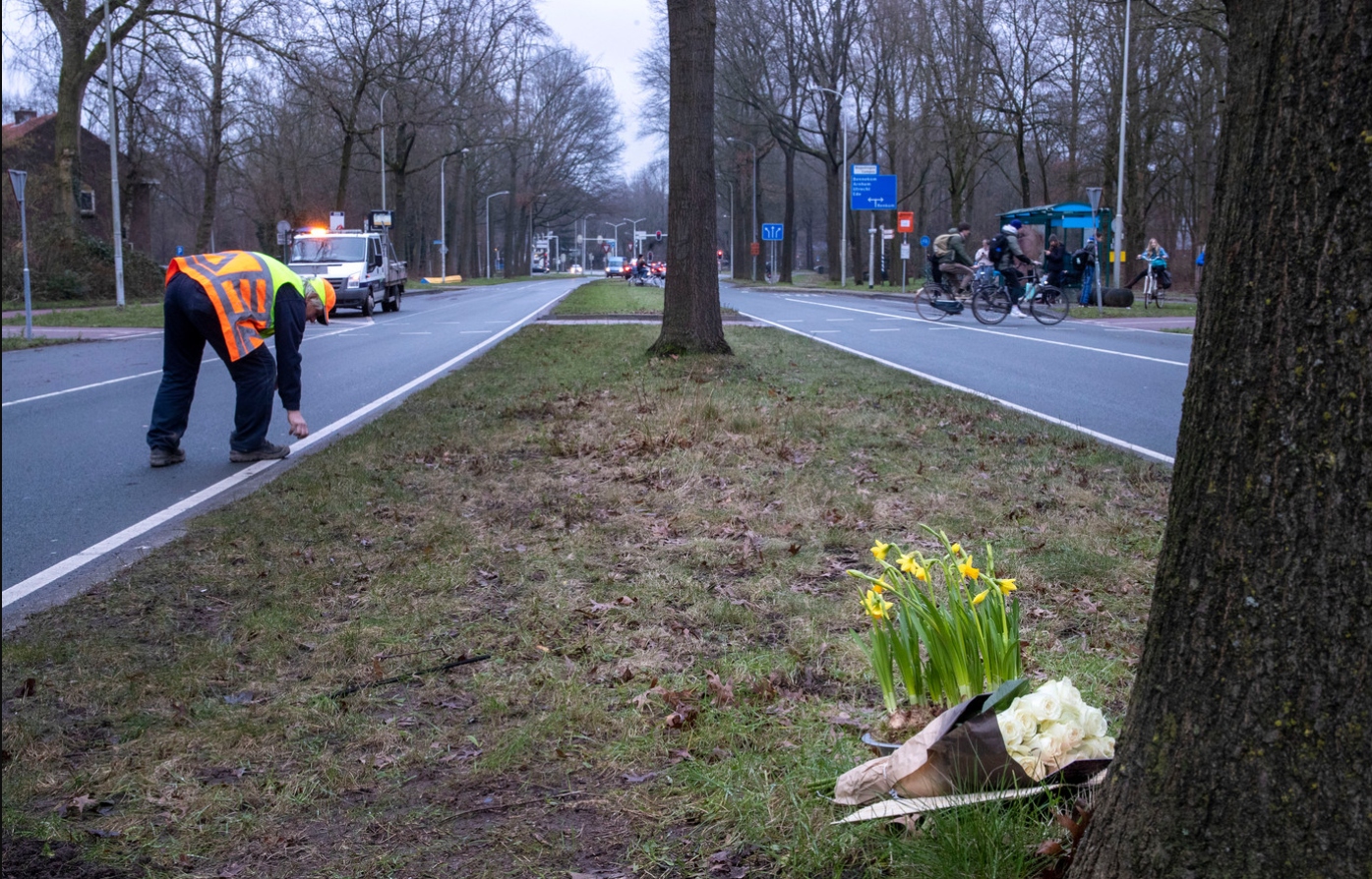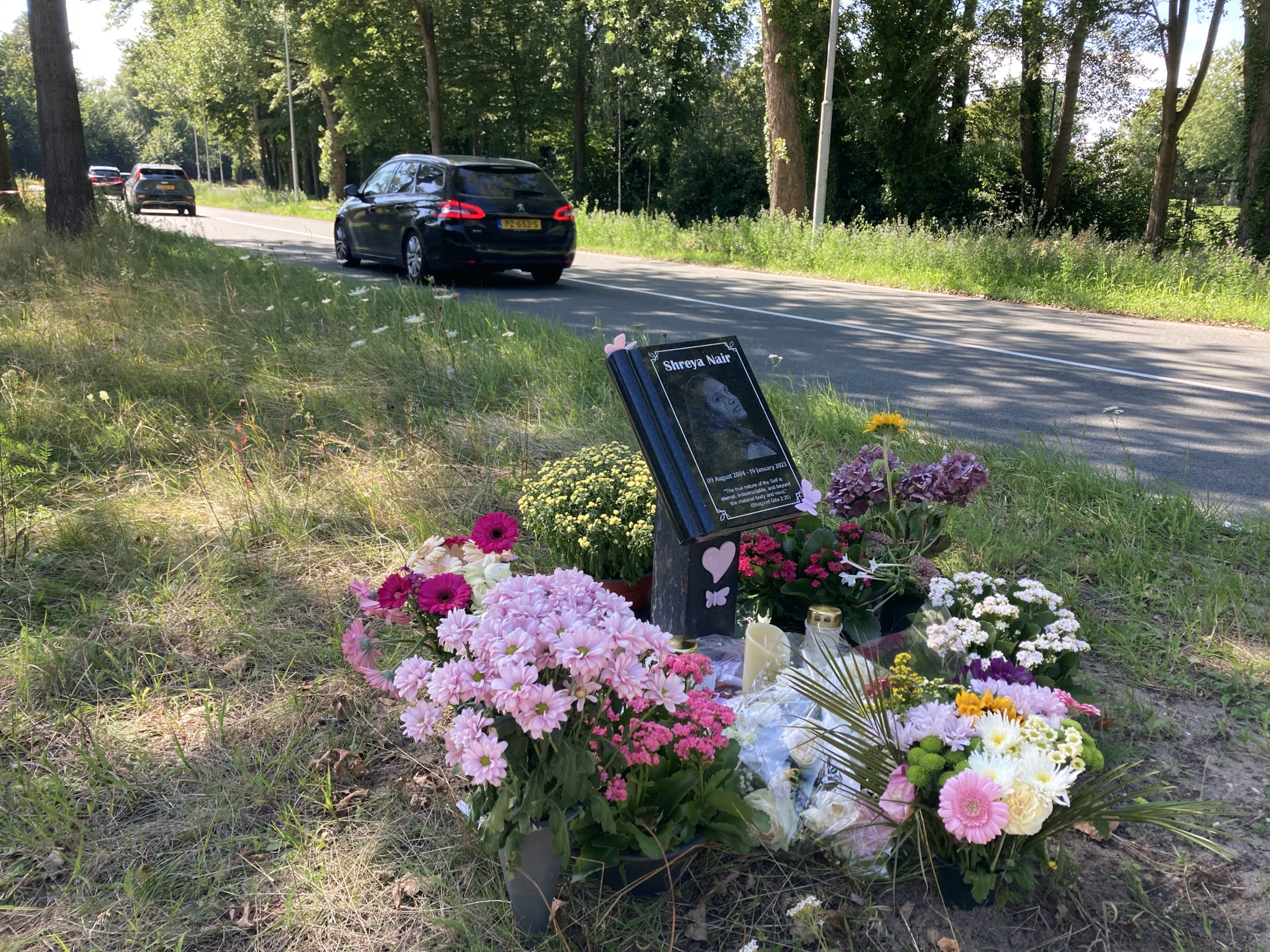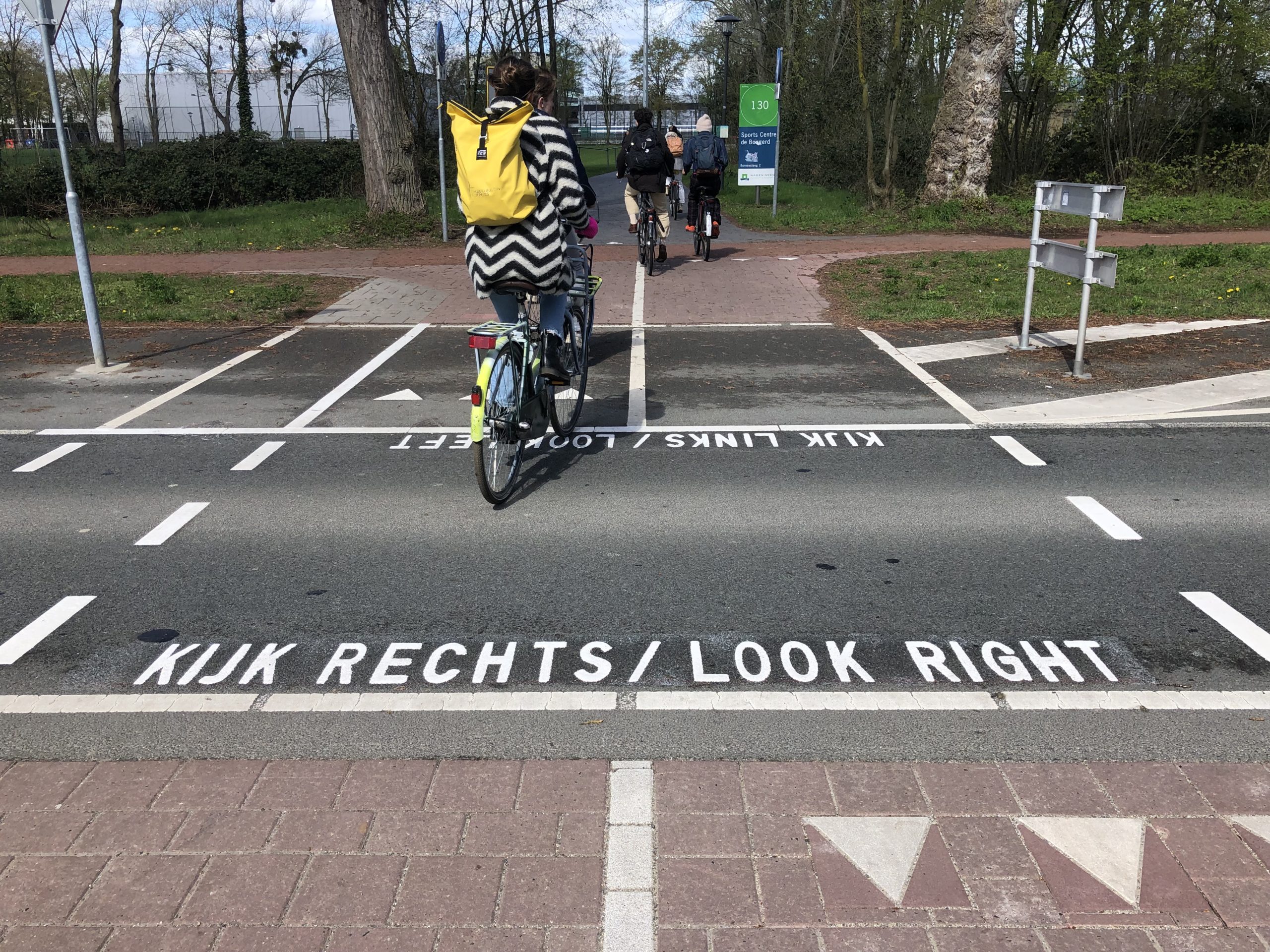Friends of WUR student Shreya Nair (18), who died recently in a car accident, call on the municipality to do something about the crossing on the Nijenoord Allee in Wageningen, which they deem unsafe. ‘We can’t sit around waiting for another disaster, can we?’
Three-and-a-half weeks after the fatal accident, Bram van de Kraats still avoids the crossing on the Nijenoord Allee in Wageningen, choosing to take a detour to the campus instead.
Van de Kraats and a group of friends from the Food Technology programme cycle towards town from the campus on Thursday, 19 January. Ready for some fun and relaxation after having spent hours in the lecture hall. Eighteen-year-old Shreya Nair, from India, cycles at the front of the group. While the rest of the group hits the brakes at the busy crossing on the Nijenoord Allee, Shreya tries to make it across. ‘And then, there was the van.’
She is hit by the taxi van right in front of her friends. The students immediately see that the situation is grave. Van de Kraats calls the emergency services, who arrive quickly. But their help comes too late, and the student succumbs to her injuries.
Memorial
Van de Kraats and Vicky Klein Gebbink (18), a friend who was not present during the accident, describe Shreya as a warm and fun person. ‘She had an extremely positive attitude, always seeing the good in a bad situation’, Van de Kraats states. ‘If I was in a bad mood in the morning, she always made me laugh.’ The students would sometimes study together but, more frequently, organise fun evenings. Even just before the accident when a group went hot potting – a type of Chinese fondue. Klein Gebbink: ‘We have decided to make a tradition out of it, to honour the memory of Shreya.’
Many students make a dash for it at the crossing because you have to wait for the many cars first otherwise.
In addition to grieving and remembering, Klein Gebbink and Van de Kraats are also otherwise committed to the memory of their friend. They want the dangerous situation at the crossing addressed. According to Van de Kraats, hazardous situations occur there every day. He sees near misses occur every day. ‘It is a busy road that you must cross to reach the university. Many students make a dash for it at the crossing because you have to wait for the many cars to pass first otherwise. There are frequent near-misses, particularly if students are in a hurry to get to the university in time.’
Speeding
Klein Gebbink calls the crossing ‘confusing’ for both cyclists and drivers. ‘Drivers are not alerted anywhere about the crossing, and cyclists are not always able to see the oncoming traffic, especially not if there is a bus at the bus stop.’ Moreover, she says, cars often exceed the 50 km/h speed limit. ‘It is a road that encourages speeding. I drive there often, and if I drive 50, cars behind me start tailgating me because they want me to speed up.’
The students are supported by Wageningen Cyclists Union. Two days after the fatal accident, they protested on the Nijnoord Allee to raise awareness for the ‘life-threatening crossing’. Klein Grebbink was at the protest. The two later spoke with mayor Floor Vermeulen about addressing the traffic situation on the Nijenoord Allee. But Vermeulen was not inclined to make any promises that something would be done shortly.
Measures
Klein Gebbink: ‘We had hoped for a little more compassion—something acknowledging that the crossing is dangerous and needs to be addressed soon. But the mayor focused on measures that have already been taken to make the crossing safer and that there is a plan to do something about the traffic issues later. The meeting felt a little like a formality.’
The plan Vermeulen referred to is the More Accessible Wageningen (Beter Bereikbaar Wageningen) project, which aims to prevent cyclists from having to cross busy roads on their way to and from the campus by constructing new routes. Moreover, traffic lights are to be placed at existing crossings, a spokesperson for the municipality states in an earlier interview. Gelderland province, responsible for implementing the project, expects to start in 2024.
Danger every day
Klein Gebbink: ‘These plans are great, but in the meantime, it is still a dangerous road. We can’t just sit around and wait, hoping nothing goes wrong in the meantime. The situation there is a danger every day. You would hate to see something terrible happen again.’
Doing nothing is not an option, the students say. The call for subtle interventions to warn drivers about the crossing or to ensure the cars are slowed down. Van de Kraats: ‘A warning sign at the very least, or an optical speedhump or road markings. The upcoming crossing is not marked at all.’ The students hope to meet the mayor again soon to discuss the issue.
WAGENINGEN MUNICIPALITY’S REACTION
When asked about the plans for measures related to the crossing on the Nijenoord Allee, the municipality states they are awaiting ‘possible recommendations from the police resulting from their analysis of the accident.’ ‘As soon as these are available and we know more about what measures are desirable, we will report back to the students as we agreed to do’, a spokesperson states.
This article was previously published in De Gelderlander / Job van Gasselt

 Shortly after the accident, a memorial was erected for the deceased student. A civil servant cleaned the remainder of the debris that afternoon. Photo Herman Stöver
Shortly after the accident, a memorial was erected for the deceased student. A civil servant cleaned the remainder of the debris that afternoon. Photo Herman Stöver 

